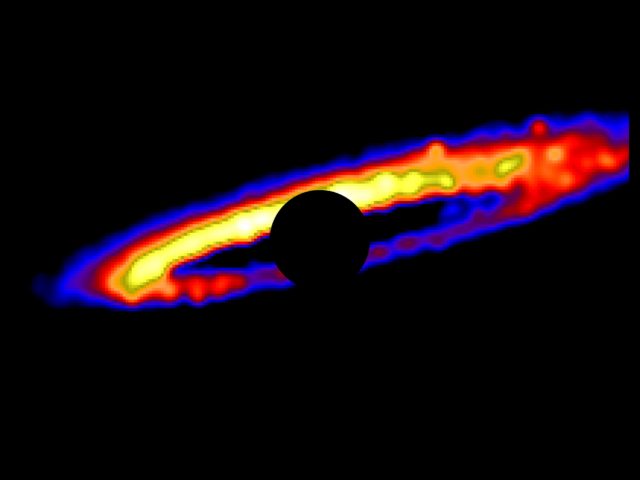
Simulated image of the HD 106906 stellar debris disk, showing a ring of rocky planet-forming material. (Erika Nesvold/Carnegie Institution for Science)
Scientists Gain New Insight into Planetary Evolution
Scientists recently gained new insight into the evolution of planet formation by creating and studying a model of a fairly young solar system 300 light years from Earth.
The nearly 13 million year-old planetary system circles a star known as HD 106906.
The system features a surrounding planet forming debris disk and one giant planet that orbits it from a distance that is at least 650 times as far as Earth is to the sun.
The planet, discovered by an international team of scientists in 2014, is thought to have a mass that’s 11 times greater than Jupiter and takes 1,500 years to make one complete solar orbit.
The scientists created a model of the system that examined the gravitational influence the planet would have on the structure of the debris disk.
The model suggests that the solitary planet likely formed outside of the disk rather than inside the disk and moving out to its current location.
Ancient Galaxies Have Very Little Dark Matter
New observations by an international team of astronomers’ show that huge galaxies created some 10 billion years ago, during a peak in galaxy formation, were comprised of mostly baryonic or normal matter and very little of the mysterious dark matter that tends to dominate much younger galaxies.
The astronomers led by Germany’s Max Planck Institute for Extraterrestrial Physics made their findings after measuring the rotation of six massive and distant star-forming galaxies.
Using the European Southern Observatory’s (ESO) Very Large Telescope, the group of scientists said they found that the outer regions of these old galaxies rotated much slower than areas closer to their cores.
That’s different than much younger spiral galaxies.
The astronomers think this difference suggests that there is less dark matter present in the ancient galaxies than had been expected.
Star in Close Dance with Black Hole Spotted
Astronomers using NASA’s Chandra X-ray Observatory and NuSTAR X-ray space telescope as well as the Australia Telescope Compact Array say they have found evidence of the tightest orbit of a companion star around a black hole.
The star, a white dwarf is said to circle the black hole at a rate of 2 times an hour from a distance equal to 2.5 times the separation between the Earth and the moon.
The black hole/white dwarf system was identified as X9 and is located a Milky Way globular star cluster nearly 15,000 light-years from Earth.
The scientists say the white dwarf is so close to the cosmic abyss that stellar material is being stripped away and dumped into a disk of matter surrounding the black hole before it’s pulled in by the tremendous gravity.
While they don’t think the white dwarf is in danger of falling in or being torn apart by the black hole, the researchers say its fate is uncertain.

Itching is a highly contagious behavior. When we see someone scratch, we’re likely to scratch, too. New research from the Washington University Center for the Study of Itch shows contagious itching is hardwired in the brain. (Michael Worful)
Contagious Itching or Scratching Hardwired in Brain
When we see someone yawn or scratch an itch, sometimes we can’t help but respond in kind.
Scientists call this socially contagious behavior.
For years, many scientists have thought that this behavior was an empathic or psychological response.
A new study by researchers at the Washington University School of Medicine proposes that the mimicked scratching response is controlled by chemicals released in the brain.
In the study, researchers showed mice videos of other mice scratching themselves. The scientists noticed that the videos evoked a similar behavior in the live mice.
The scientists found that whenever a mouse saw another one scratch, a chemical called GRP would be released by a part of its brain that controls wake/sleep functions.
When the researchers blocked the GRP in the mouse brain, they found that mice would no longer mimic scratching behavior as observed in video.
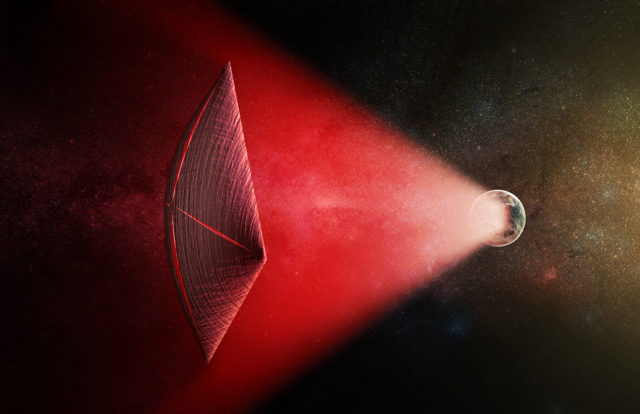
An artist’s illustration of a light-sail powered by a radio beam (red) generated on the surface of a planet. The leakage from such beams as they sweep across the sky would appear as Fast Radio Bursts (FRBs), similar to the new population of sources that was discovered recently at cosmological distances. (M. Weiss/CfA)
Could Fast Radio Bursts Be Powering Alien Probes?
The latest astronomical phenomenon to pique the interest of scientists is called the fast radio burst.
Fast radio bursts or FRB’s are just that; very fast, lasting less than 5 milliseconds, but brilliant and powerful pulses of electromagnetic energy at radio wavelengths.
Now, a new study authored by scientists at Harvard University and the Harvard-Smithsonian Center for Astrophysics suggests that these fast radio bursts just might be the result of advanced alien technology.
They theorize these FRB’s could very well be energy leakage from planet-sized transmitters powering interstellar probes in distant galaxies.
One of the researchers says an artificial origin of these FRB’s is worth considering and examining since scientists haven’t been able to find any possible natural source.
Scientists think the Fast Radio Bursts originate millions or even billions of light-years away.
Cheaper and More Effective Snake Bite Treatment
According to the World Health Organization at least 100,000 of the nearly 5 million estimated annual victims of snake bite die.
About 300,000 more people suffer from amputations and other permanent disabilities related to snake bites.
Today’s venomous snake bite treatment involves a slow and very expensive intravenous infusion of anti-venom.
Right now these anti-venom treatments are very specific to certain snake types and stop the damage effected by only a small number of species.
University of California at Irvine chemists say they have come up with a way that could, someday, be a cheaper and more effective way to counter deadly snake venom.
The researchers say they focused on families of proteins common to many serpents and created a polymer material that keeps toxins from bursting cell membranes and causing widespread destruction.
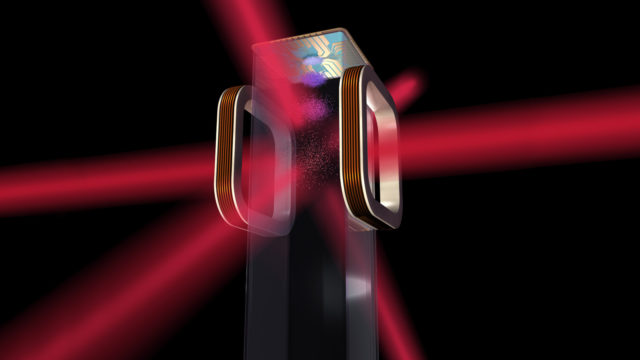
Artist’s concept of an atom chip for use by NASA’s Cold Atom Laboratory (CAL) aboard the International Space Station. CAL will use lasers to cool atoms to ultracold temperatures. (NASA)
NASA Readies Coolest Spot in the Universe
NASA’s Jet Propulsion Laboratory is preparing to send an ice chest-sized experiment to the International Space Station that will produce the coolest spot in the universe.
Called the Cold Atom Laboratory (CAL) the experiment is a suite of instruments that include lasers, a vacuum chamber and an electromagnetic “knife”.
CAL’s instruments have been designed to freeze atoms of gas down to just a billionth of a degree above absolute zero or -273.15 degrees Celsius, which scientists say is more than 100 million times colder than what can be found in deep space.
It’s thought that the CAL experiment could help improve various technologies such as sensors, quantum computers and atomic clocks that spacecraft use for navigation.
It could also provide new insight into dark energy which scientists theorize comprises 68 percent of the universe.
CAL is set to go up to the ISS this August.

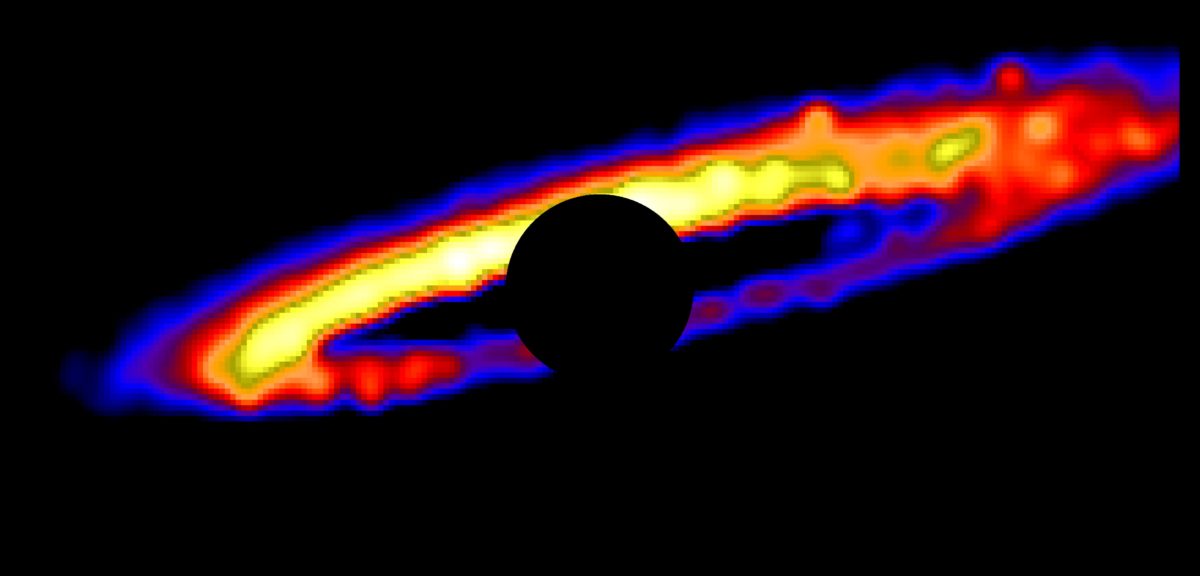
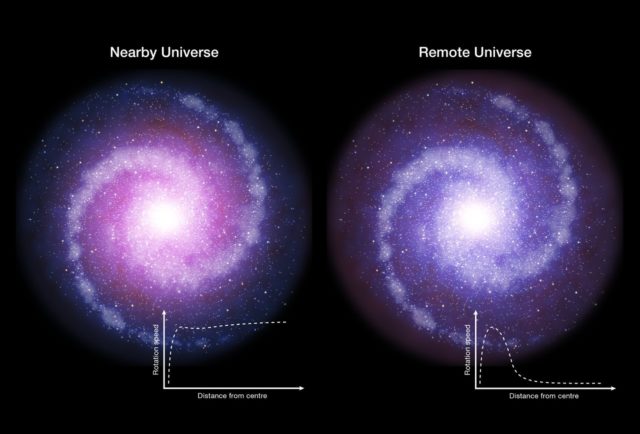
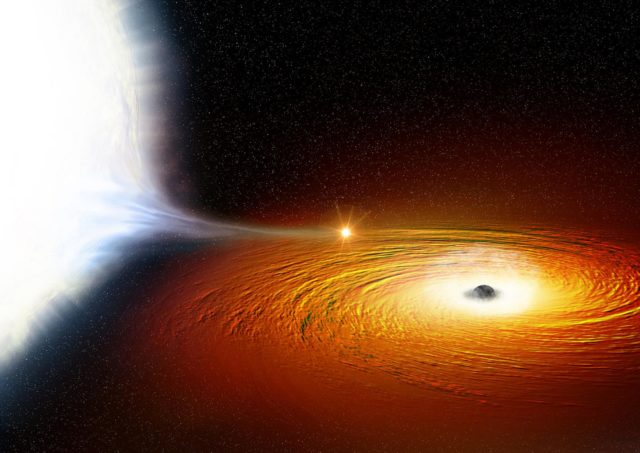

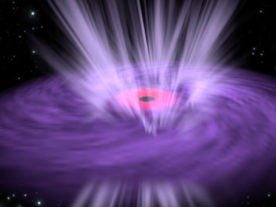





















Comments are closed.